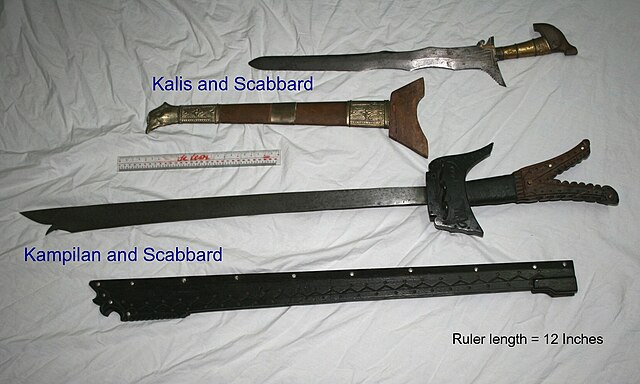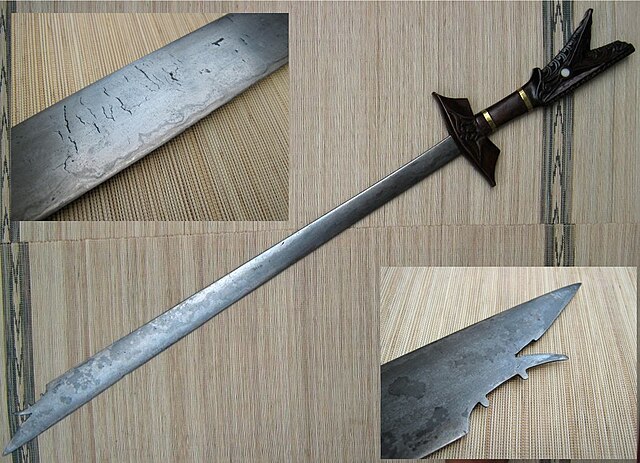The kampilan is a type of single-edged sword, traditionally used by various ethnic groups in the Philippine archipelago. It has a distinct profile, with the tapered blade being much broader and thinner at the point than at its base, sometimes with a protruding spikelet along the flat side of the tip. The design of the pommel varies between ethnic groups, but it usually depicts either a buaya (crocodile), a bakunawa, a kalaw (hornbill), or a kakatua (cockatoo)..
Parts of a kampílan, written in Maguindanao and Maranao languages of Mindanao.
A kampilan with a crocodile pommel shown with the shorter kalis for comparison. The sheaths are also displayed.
The lamination (pattern welding) of the blade of this kampílan is clearly visible. A close-up view of the characteristic spikelet on the blade's tip is also shown.
Detail of the hilts of Moro kampílan, which typically have kalaw (hornbill) pommel designs.
Hinilawod is an epic poem orally transmitted from early inhabitants of a place called Sulod in central Panay, Philippines. The term "Hinilawod" generally translates to "Tales From The Mouth of The Halawod River". The epic must have been commonly known to the Visayans of Panay before the conquest, since its main protagonists, like Labaw Donggon, were noted in the accounts of the Islanders' beliefs and recorded by early Spanish colonizers. One of these Westerners' accounts says that the adventures of this ancient hero of Panay were recalled during weddings and in songs. It was noted that there were still native Mundos of Dingle, Iloilo who worshipped Labaw Donggon even during the last years of the Spanish rule in the Philippines. These worshippers would stealthily enter a certain cave in Dingle in the evening of a certain day of the year, in order to render homage and to offer chickens, doves, rice, bananas, and pigs to the ancient Visayan god.

Hinilawod c. 1983, by Art Geroche, as displayed at the lobby of the Cultural Center of West Visayas University, La Paz, Iloilo City, Philippines.





